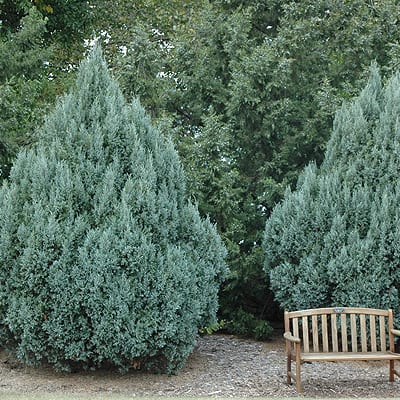
Juniper, Rocky Mountain
(Juniperus Scopulorum)
Juniperus Scopulorum
| Size | Light | Hardiness |
|---|---|---|
| 30′ to 40′ | Sun to partial shade | Zone: 3-8 |
| # Per Bundle | Bundle Type | Size |
|---|---|---|
| 50 | TR 2-2 | 12″-18″ |
Rocky Mountain juniper is an evergreen large shrub or small tree to 50 ft (15.2 m) tall, but usually much smaller. Specimens are variable in habit, sometimes squat and shrubby, but usually narrowly cone shaped. The trunk is short and stout, often dividing near the ground. The branches are rather thick and spreading to partly erect. Rocky Mountain juniper has reddish bark that is stringy in narrow strips but does not exfoliate. Most of the leaves are like overlapping scales, closely pressed to the twigs. Juvenile leaves, usually only found on young seedlings, are more like needles, and they spread away from the twigs. The foliage is dense and pleasantly aromatic. Trees may have male or female cones, but not both. The fruits are fleshy berrylike spherical cones, about 1/3 in (0.8 cm) in diameter. They are bright blue with a whitish bloom and sweet tasting, with thin skins. Rocky Mountain juniper is closely related and quite similar to eastern redcedar, and was once believed to be the same species. But eastern red cedar has fruits that mature in a single season, whereas those of Rocky Mountain juniper take two year to ripen. Also, eastern red cedar has exfoliating bark. The two species hybridize where their ranges overlap.


